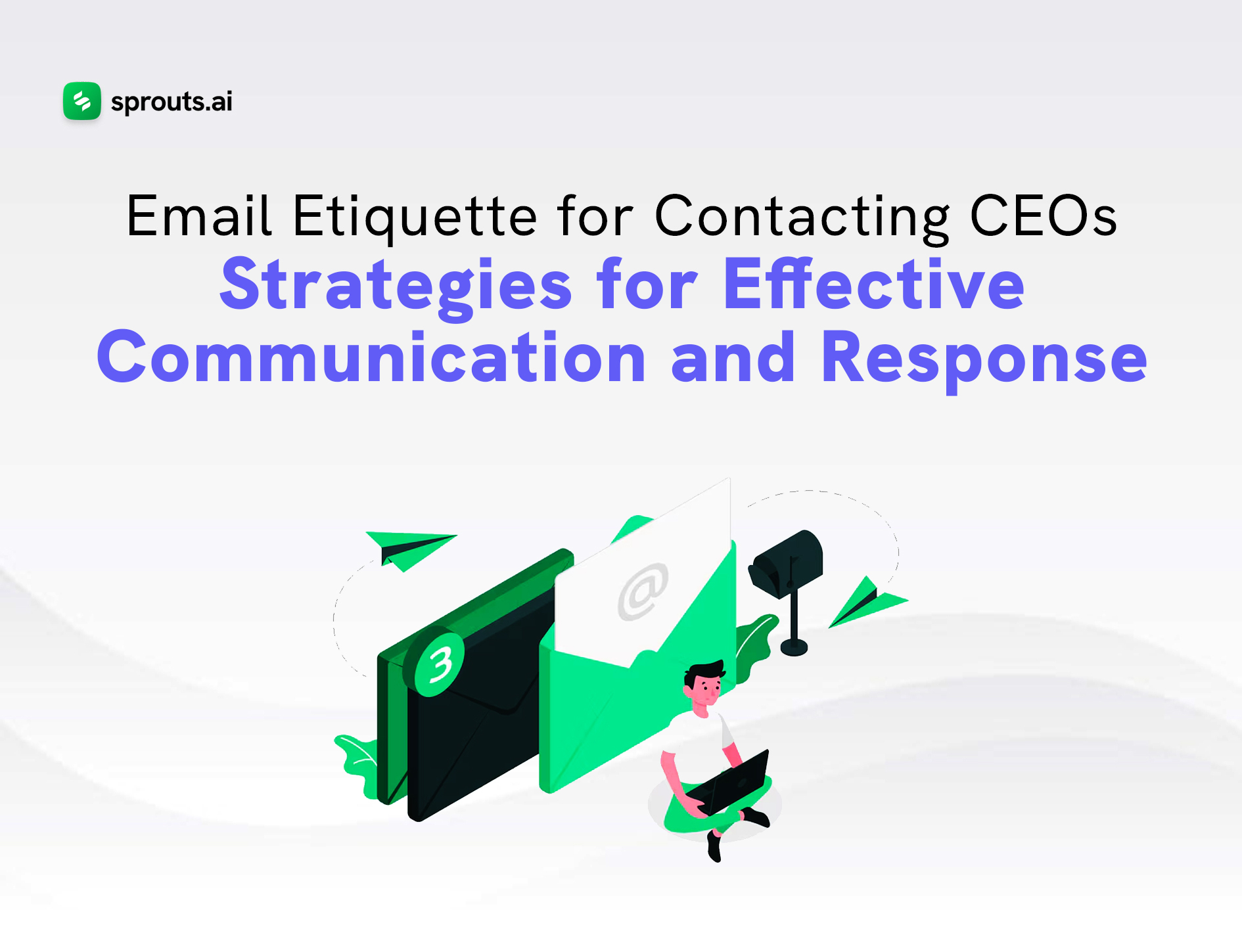Ever dreamt of connecting with a CEO to discuss a groundbreaking idea or explore potential partnerships? While the thought may seem intimidating, a well-crafted email can bridge the gap and open doors to exciting possibilities. But making it to the CEO’s inbox requires a blend of professionalism, conciseness, and strategic communication.
This blog will help you with the essential etiquette for contacting CEOs. Learn how to address their priorities, showcase your value proposition, and ultimately achieve your communication goals. Get ready to transform your outreach strategy, read on.
Understanding the Importance of Email Etiquette
Before delving into specific strategies, it’s crucial to understand why email etiquette matters when contacting CEOs. These individuals are inundated with emails daily, ranging from important business matters to promotional messages and spam. Amidst this deluge of correspondence, emails that exhibit professionalism, clarity, and relevance stand out. A well-crafted email not only captures the CEO’s attention but also demonstrates your respect for their time and priorities.
Research and Personalization
The foundation of any effective email outreach to CEOs is thorough research and personalization. Generic, mass-mailed messages rarely yield the desired results. Begin by researching the CEO’s background, recent accomplishments, and professional interests. Understanding their industry involvement and contributions can help tailor your message to resonate with them.
Incorporate personalized elements into your email, such as referencing a recent article they authored or acknowledging a milestone the company achieved. Demonstrating genuine interest and knowledge about the CEO and their company sets your email apart from generic solicitations.
Crafting a Compelling Subject Line
The subject line is the first impression your email makes, and it can significantly impact whether it gets opened or relegated to the depths of the inbox. Keep it concise, clear, and compelling. A subject line that conveys the purpose of your email succinctly while piquing curiosity increases the likelihood of engagement. Avoid clickbait tactics or misleading subject lines, as they can erode trust and credibility.
Concise and Relevant Content
CEOs value brevity and relevance in email communications. Keep your message concise and focused, highlighting the key points without overwhelming them with unnecessary details. Start with a brief introduction that establishes who you are and why you’re reaching out. Clearly articulate the purpose of your email and how it aligns with the CEO’s interests or the company’s objectives.
Provide context for your request or proposal, but avoid lengthy explanations or unnecessary background information. CEOs are busy individuals who appreciate messages that respect their time constraints. Use bullet points or numbered lists to organize information effectively and enhance readability.
Professional Tone and Language
Maintain a professional tone throughout your email, using formal language and avoiding slang or overly casual expressions. Address the CEO respectfully, using appropriate titles unless you have a pre-existing relationship that allows for a more informal approach. Proofread your email carefully to ensure proper grammar, spelling, and punctuation, as errors can detract from your credibility.
Call to Action and Next Steps
Clearly outline the desired outcome or action you hope to achieve with your email. Whether it’s scheduling a meeting, requesting feedback, or seeking partnership opportunities, include a specific call to action that prompts the CEO to respond or take the desired course of action. Provide clear instructions on how they can proceed, whether it’s replying to the email, scheduling a call, or visiting a link for more information.
Respectful Follow-Up
If you don’t receive a response within a reasonable timeframe, it’s appropriate to send a respectful follow-up email. Avoid appearing pushy or entitled; instead, express understanding of their busy schedule and reiterate the importance of your message. Keep the follow-up brief and courteous, giving the CEO another opportunity to engage with your request or proposal.
Timing and Frequency
Consider the timing and frequency of your email communications with CEOs. Sending emails during peak business hours or on weekends may not yield the desired attention. Aim for strategic timing, such as early morning or late afternoon, when the CEO is likely to have fewer distractions. Exercise restraint in your frequency of outreach; bombarding CEOs with multiple emails can be perceived as intrusive or desperate.
Leveraging Mutual Connections
If possible, leverage mutual connections or referrals when reaching out to CEOs. An introduction from a trusted colleague, mentor, or industry contact can significantly increase the likelihood of your email being read and considered. Mentioning the mutual connection in your email subject line or introduction can establish immediate credibility and relevance.
Cultivating Patience and Persistence
Finally, cultivate patience and persistence in your email outreach efforts. CEOs receive numerous emails daily, and it may take time for them to review and respond to each message. Be prepared for delayed responses or the possibility of not receiving a reply at all. Respectfully following up and maintaining a positive attitude can increase your chances of eventually securing a response or engagement.
Reaching out to CEOs requires a strategic balance. Persistence is key, but so is respect for their time and priorities. Following up demonstrates your genuine interest without being pushy. Leveraging mutual connections adds instant credibility, and maintaining a positive attitude throughout the process portrays your professionalism. While a timely response is ideal, cultivating patience allows room for a successful outcome. By mastering email etiquette, you’ll build bridges of communication that can pave the way for fruitful partnerships and propel your business goals forward.

